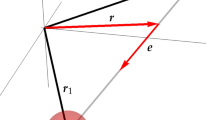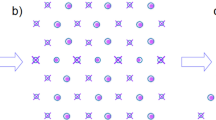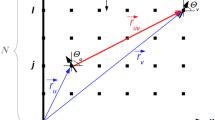Abstract
IT is well known that a limit to the validity of quantum mechanics is set by its neglect of the effects of radiation damping, and an indication as to where this limit occurs is given in electron theory by the classical equation of Lorentz, which takes radiation damping into account. Now the interaction of the meson field with a neutron or proton contains an explicit dipole term, and this leads to scattering cross-sections for mesons which increase quadratically with the energy. A classical treatment of radiation damping for a dipole would thus give us the limits of the quantum theory due to neglect of this factor. A non-relativistic attempt has already been made by Heisenberg1 for a dipole of finite extension, but his results even in the limit of a point dipole do not agree with ours. We believe that this is because the usual method of calculation which he follows is inconsistent with the theory of relativity, for whereas the retardation of the field is taken into account, different parts of the dipole are assumed to move instantaneously in phase.
This is a preview of subscription content, access via your institution
Access options
Subscribe to this journal
Receive 51 print issues and online access
$199.00 per year
only $3.90 per issue
Buy this article
- Purchase on Springer Link
- Instant access to full article PDF
Prices may be subject to local taxes which are calculated during checkout
Similar content being viewed by others
References
Heisenberg, Z. Phys., 113, 61–86 (1939).
Dirac, Proc. Roy. Soc., A, 167, 148–69 (1938).
Bhabha, Proc. Roy. Soc., A, 172, 384–409 (1939).
Bhabha, Proc. Indian Acad. Sci., A, 10, 324–332 (1939).
Kramers, Physica, 1, 825–28 (1934).
Bhabha, Proc. Indian Acad. Sci., A, in the press.
Heitler, NATURE, 145, 29–30 (1940).
Author information
Authors and Affiliations
Rights and permissions
About this article
Cite this article
BHABHA, H. Classical Theory of Point Dipoles. Nature 145, 819–820 (1940). https://doi.org/10.1038/145819a0
Issue Date:
DOI: https://doi.org/10.1038/145819a0
This article is cited by
-
Classical Theory of Charged Point-Particles with Dipole Moments
Brazilian Journal of Physics (2022)
Comments
By submitting a comment you agree to abide by our Terms and Community Guidelines. If you find something abusive or that does not comply with our terms or guidelines please flag it as inappropriate.



